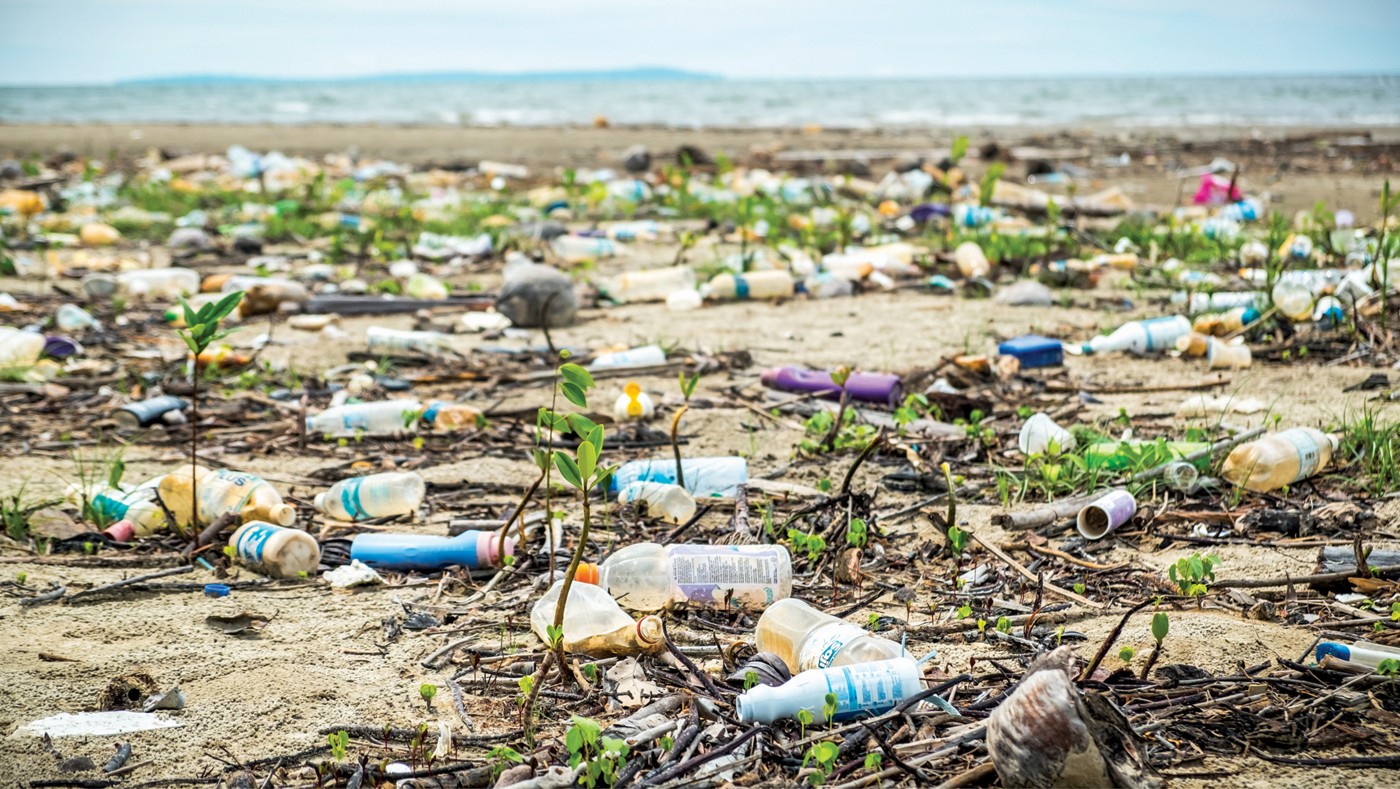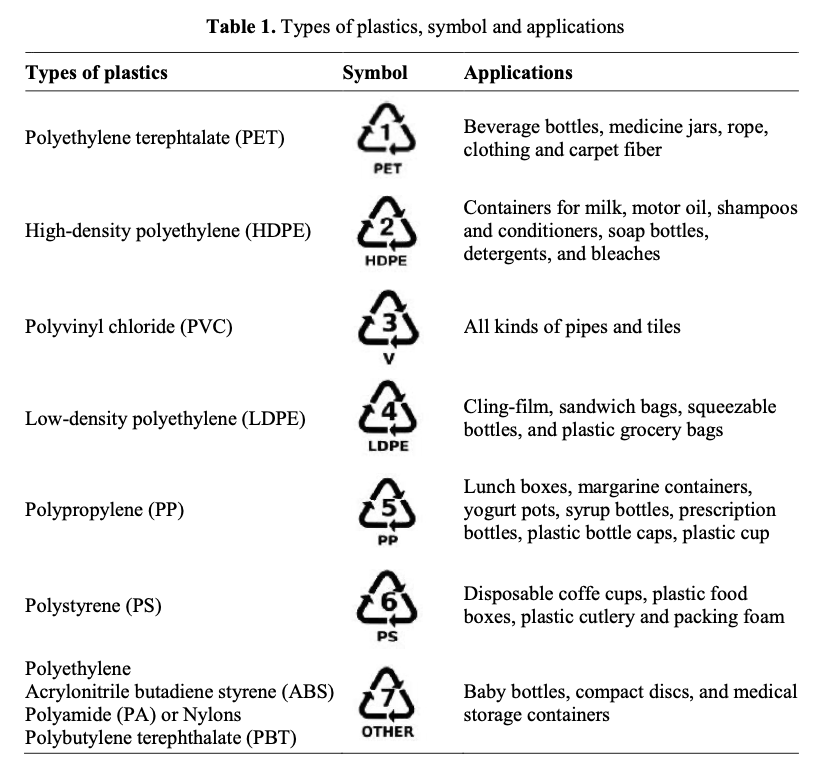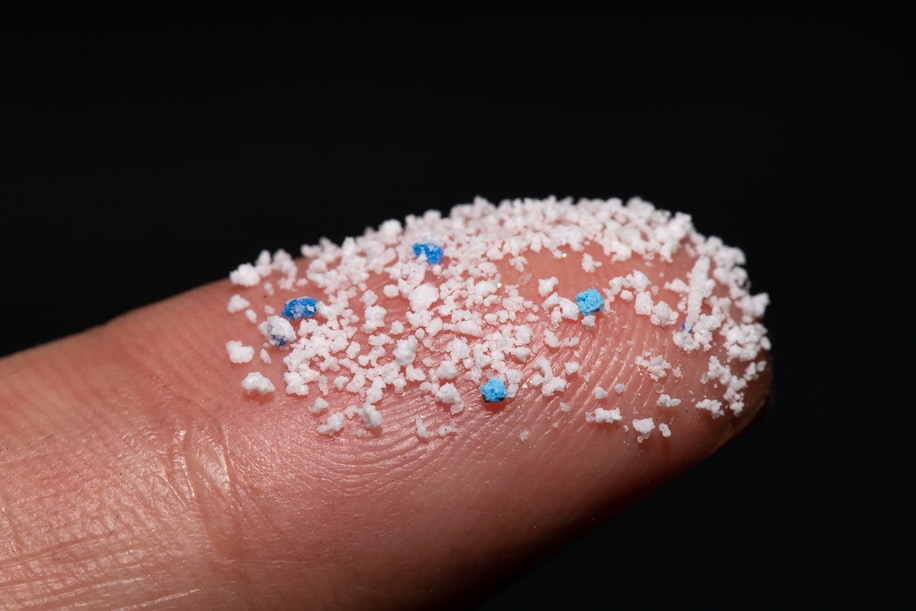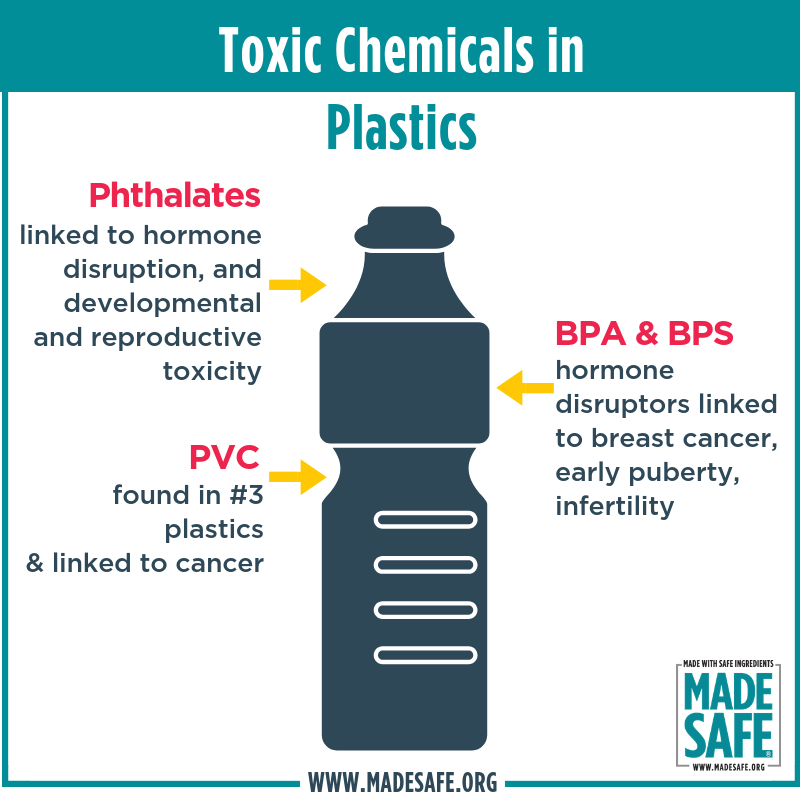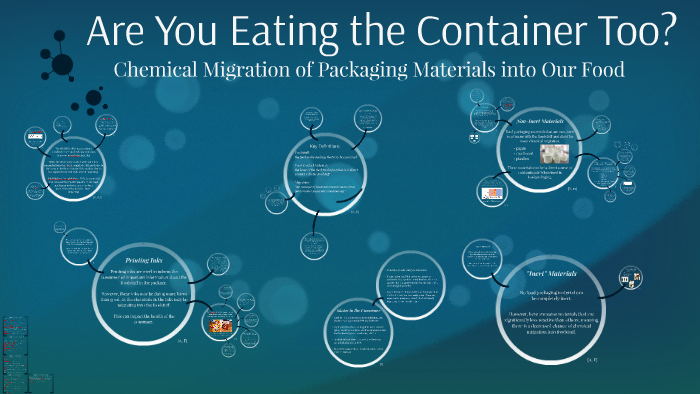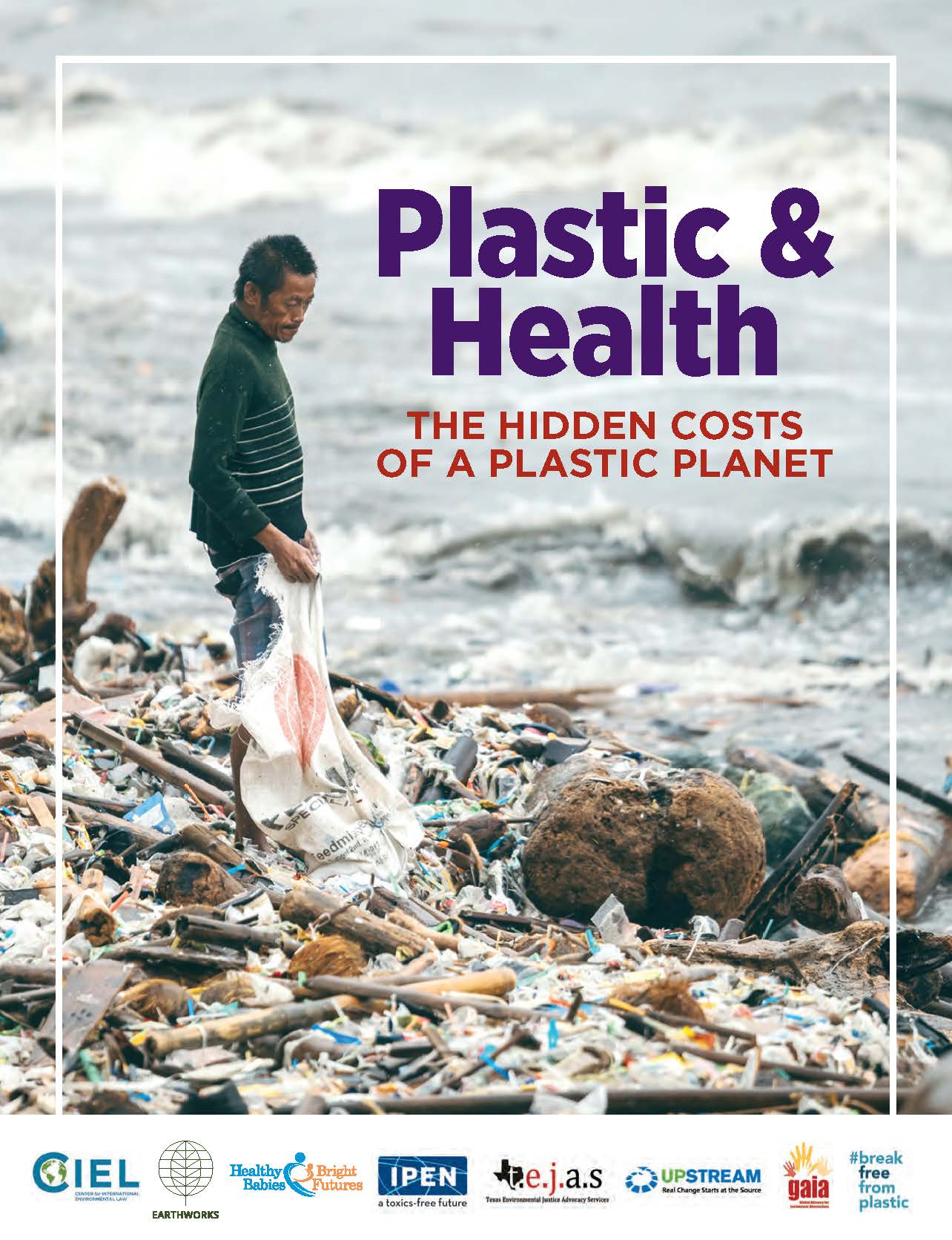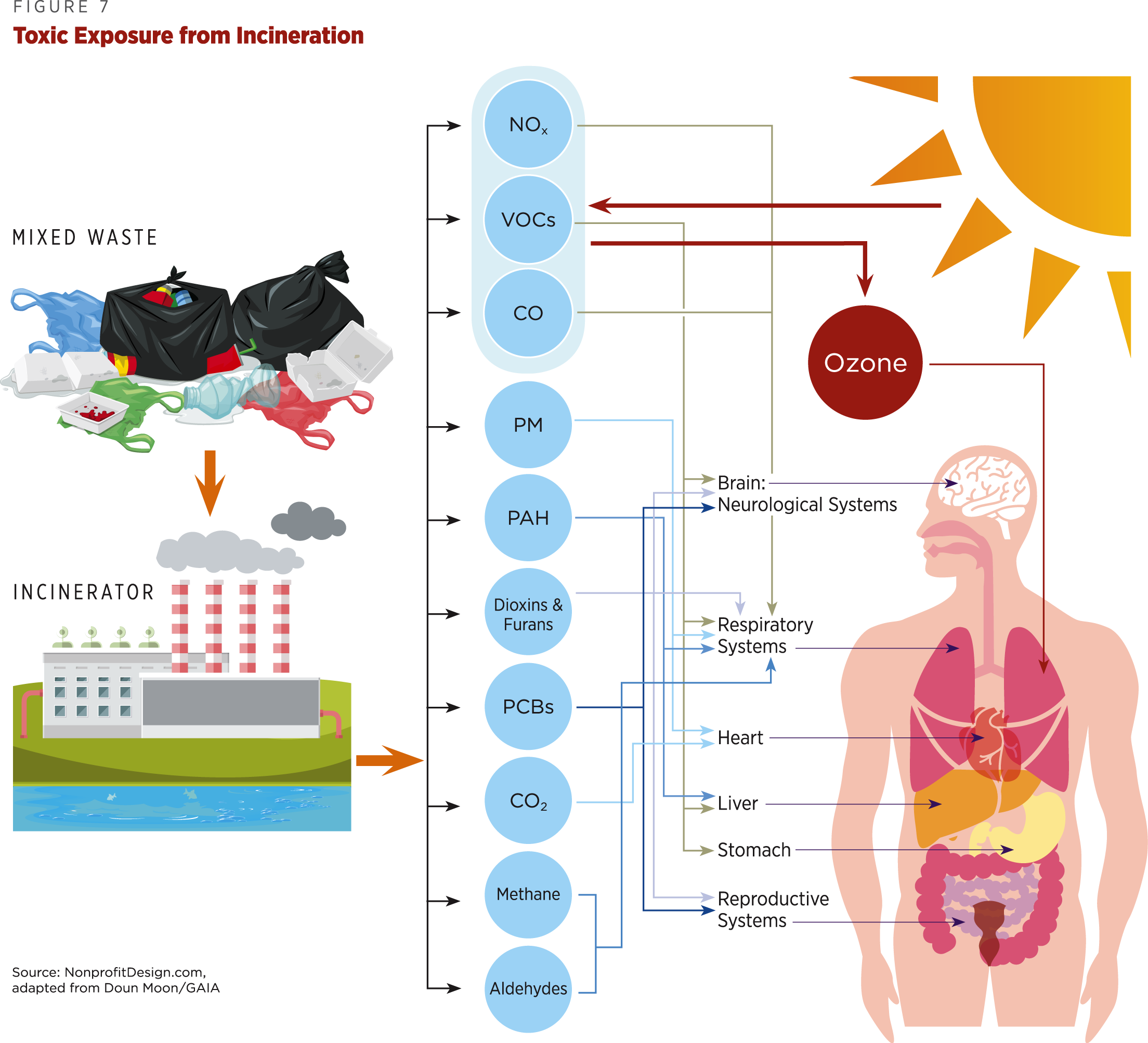PLASTIC BASICS
Plastics tend to constitute an estimated 10% of total household waste, most of which are disposed of in landfills.1 Plastics are made of a wide variety of synthetic and semi-synthetic organic substances, which allow for various molded objects and shapes. Due to the multiple uses and durability of plastic, production is high; in 2009, 230 million tonnes of plastic was produced in the European Union.1(702)
CATEGORIZING PLASTIC
Plastics are seemingly ubiquitous in our environment, due to their versatility, to include food packaging, personal care products, disposable medical equipment, and other technological devices.2 Plastics can be broken down into 7 major types according to Martynis et al3 (Please see image above).
Plastics can also form debris, or microplastics (MP), defined as plastic particles that are smaller than 5 mm in diameter.2(1) MPs that are intentionally released in the environment are considered primary, while MPs that are released as a deterioration process of plastic are considered secondary.2(1)
Examples of primary MPs include abrasives and microbeads in personal care products. Primary MPs also occur during the production of plastic materials.2(1) Secondary MPs can include the deterioration, improper disposal, and fragmentation of larger pieces of plastic such as vehicle exhaust, plastic films, and plastic garbage.2(1)
WHAT IS IN PLASTIC?
Plastics, such as those found in food packaging, contain a myriad of chemicals; at least 148 substances exist, and are all considered hazards for humans and the environment.4 Such substances include bisphenol A (BPA), bisphenol S, bisphenol F, di-(2-ethylhexyl) phthalate (DEHP), and nonylpehol.4(2,3)
HOW CAN PLASTICS SPREAD?
It is now widely understood that plastic food packaging undergoes chemical migration; a process whereby chemical constituents of plastic food packaging transfers into the foods they hold.4(1) Inevitably, such substances contaminate food and become part of the human diet.
MPs, discussed previously, are also problematic as they allow for entry into individuals via inhalation.2(1) Considering that MP particles quite small in mass, winds can carry them considerable distances (thousands of miles); a process that ultimately contaminates animals, humans, marine life, freshwater, drinking water, food, the atmosphere, and agroecosystems.5
WHY ARE PLASTICS AND THEIR DERIVITIVES A HEALTH CONCERN?
Plastics (like MPs) contain chemicals, which improves the quality (color, transparency) and durability (resistance to degradation) of the product. Such chemicals are considered additives to include flame-retardants, dyes, lubricants, antioxidants, plasticizers, and fillers.5(3,4) Furthermore, MPs also absorb chemicals from the surrounding ambience (i.e., heavy metals, pathogens).2(17),5(4)
Plastic additives become problematic since many of them are classified as hazardous, though they continue to be implemented in products for human use.5(5) BPA (helps impart rigidity to plastics), discussed previously, and pthalates (chemicals used to enhance the pliability, and flexibility of plastic) are known endocrine disruptors; agents within plastic that interfere with the production, secretion, transport, and general function of hormones.6
HEALTH EFFECTS OF PLASTICS IN GREATER DETAIL
Generally, endocrine disrupting chemicals (EDCs) have been associated with cancers (testes, prostate, breast), metabolic disorders (obesity, diabetes, cardiovascular disease), reproductive issues (infertility, genital malformation), neurodevelopmental conditions (autism, learning disorders), and asthma.5(5) Though EDCs have become a known health issue with plastic, it is also likely that plastics are absorbing other nearby chemicals (mentioned previously) further compounding the problems and increasing the complexity of human exposure.4(6)
Plastics, like MPs, can induce inflammation and genotoxic (damaging DNA) effects. Cell cultures have also shown oxidative stress, mitochondrial dysfunction, lysosomal dysfunction, and apoptosis (cell death) upon exposure to MPs.2(16)Negative health effects may likely widen in scope when such plastics are incinerated; burning MPs, and plastics in general, release toxic gases and other harmful substances into the air, ground, and water.1(701)
Incineration of plastics release gases such as dioxins (byproduct of burning and part of industrial processes), furans (byproduct of burning and used to produce nylon), mercury, and polychlorinated biphelyls (used in industrial and consumer products; highly carcinogenic).1(701) For example, burned polystyrene (i.e., disposable coffee cups) causes central nervous system derangement and is also a well understood carcinogen and mutagen (mutations in DNA).1(707)
Burning plastics such as polyethylene (i.e., baby bottles), polypropylene (i.e., plastic cups, lunch boxes), and polystyrene (i.e., packaging foam) not only release large quantities of carbon monoxide; incinerating plastics also release heavy metals (often used as flame retardants in plastic) such as cadmium/lead/barium as well as selenium, cobalt, copper, and chromium into the air.1(703,704) Please see an article that I wrote previously on heavy metals, health consequences, and solutions in managing the same:
HEAVY METAL EXPOSURE, SAUNA USE, AND HEALTH OUTCOMES
Other byproducts of incinerating plastics include soot and solid residue (ash) which contain volatile organic compounds (VOCs), smoke, heavy metals/dioxins (mentioned previously), polycyclic aromatic hydrocarbons (also occur naturally in coal, crude oil, gasoline; causes cataracts, liver and kidney damage), and DEHP (possible carcinogen and EDC).1(704, 705) Soot and ash also have high concentrations of free radicals (see link below for more detail on free radicals) and are implicated in unfavorable health effects, especially upon the lungs.1(704)
ANTIOXIDANTS AND TRACKING OXIDATIVE STRESS
CONCLUSIONS
Plastic production and use are ubiquitous and widespread, with multiple vectors of exposure (i.e., inhalation, ingestion, transdermal)2(1) Research has suggested that plastic/additive bioaccumulation via chemical migration has inflammatory/genotoxic/endocrine disrupting effects and has been associated with cancers (testes, prostate, breast), metabolic disorders (obesity, diabetes), reproductive issues (infertility, genital malformation), neurodevelopmental conditions (autism, learning disorders), and asthma. Burning plastics also release heavy metals, produce exceedingly high levels of free radicals, and other substances which can cause cancer, high levels of oxidative stress, and damage to the nervous system, lungs, liver, and kidneys.
References
1. Verma R, Vinoda KS, Papireddy M, et al. Toxic pollutants from plastic waste: A review. Procedia Environ Sci. 2016;35(2016):702-708. doi:10.1016/j.proenv.2016.07.069.
2. Pironti C, Ricciardi M, Motta O, et al. Microplastics in the environment: Intake through the food web, human exposure and toxicological effects. Toxics. 2021;9(224):1-29. doi: https://doi.org/10.3390/ toxics9090224.
3. M Martynis, Mulyazmi, E Winanda, et al. Thermal pyrolysis of polypropylene plastic waste into liquid fuel: Reactor performance evaluation. Mater Sci Eng. 2019;543:1-7. doi:10.1088/1757-899X/543/1/012047.
4. Muncke J. Tackling the toxics in plastics packaging. PLOS Biol. 2021;19(3):1-11. doi: https://doi.org/10.1371/journal.pbio.3000961.
5. Campanale C, Massarelli, Savino I, et al. A detailed review study on potential effects of microplastics and additives of concern on human health. Int J Res Public Health. 2020;17(4):1-26. doi:10.3390/ijerph17041212.
6. Diamanti-Kandarakis E, Bourguignon JP, Giudice LC, et al. Endocrine-disrupting chemicals: An endocrine society scientific statement. Endocr Rev. 2009;30(4):293-342. doi: 10.1210/er.2009-0002.
-Michael McIsaac

